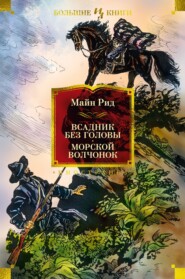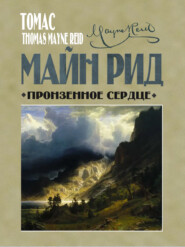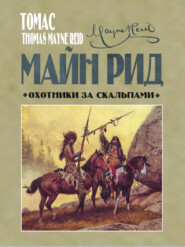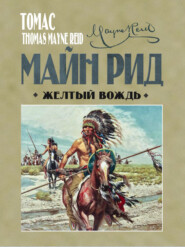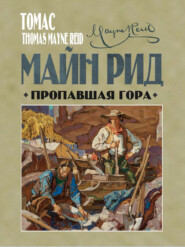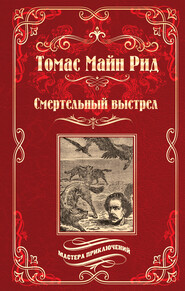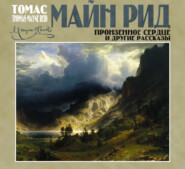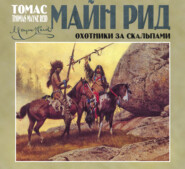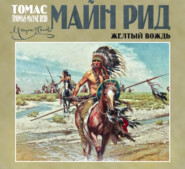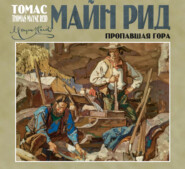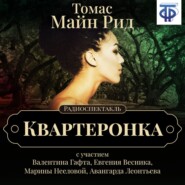По всем вопросам обращайтесь на: info@litportal.ru
(©) 2003-2024.
✖
Odd People: Being a Popular Description of Singular Races of Man
Настройки чтения
Размер шрифта
Высота строк
Поля
“Amongst the minor instruments of the ice-hunting are a long bone feeler for plumbing any cracks through which seals are suspected of breathing, and also for trying the safety of the road. Another contrivance is occasionally used with the same effect as the float of a fishing-line. Its purpose it to warn the hunter, who is watching a seal-hole, when the animal rises to the surface, so that he may strike without seeing, or being seen, by his prey. This is a most delicate little rod of bone or ivory, of about a foot in length, and the thickness of a fine knitting-needle. At the lower end is a small knob like a pin’s head, and the upper extremity has a fine piece of sinew tied to it, so as to fasten it loosely to the side of the hole. The animal, on rising, does not perceive so small an object hanging in the water, and pushes it up with his nose, when the watchful Esquimaux, observing his little beacon in motion, strikes down, and secures his prize.
“Small ivory pegs or pins are used to stop the holes made by the spears in the animal’s body; thus the blood, a great luxury to the natives, is saved.
“The same want of wood which renders it necessary to find substitutes in the construction of spears, also occasions the great variety of bows. The horn of the musk-ox, thinned horns of deer, or other bony substances, are as frequently used or met with as wood, in the manufacture of these weapons, in which elasticity is a secondary consideration. Three or four pieces of horn or wood are frequently joined together in one bow, – the strength lying alone in a vast collection of small plaited sinews; these, to the number of perhaps a hundred, run down the back of the bow, and being quite tight, and having the spring of catgut, cause the weapon, when unstrung, to turn the wrong way; when bent, their united strength and elasticity are amazing. The bowstring is of fifteen to twenty plaits, each loose from the other, but twisted round when in use, so that a few additional turns will at any time alter its length. The general length of the bows is about three feet and a half.
“The arrows are short, light, and formed according to no general rule as to length or thickness. A good one has half the shaft of bone, and a head of hard slate, or a small piece of iron; others have sharply-pointed bone heads: none are barbed. Two feathers are used for the end, and are tied opposite each other, with the flat sides parallel. A neatly-formed case contains the bow and a few arrows. Sealskin is preferred for this purpose, as more effectually resisting the wet than any other. A little bag, which is attached to the side, contains a stone for sharpening, and some spare arrow-heads carefully wrapped up in a piece of skin.
“The bow is held in a horizontal position, and though capable of great force, is rarely used at a greater distance than from twelve to twenty yards.”
Their houses, clothing, sledges, boats, utensils, and arms, being now described, it only remains to be seen in what manner these most singular people pass their time, how they supply themselves with food, and how they manage to support life during the long dark winter, and the scarce less hospitable summer of their rigorous clime. Their occupations from year to year are carried on with an almost unvarying regularity, though, like their dresses, they change according to the season.
Their short summer is chiefly employed in hunting the reindeer, and other quadrupeds, – for the simple reason that it is at this season that these appear in greatest numbers among them, migrating northward as the snow thaws from the valleys and hill-sides. Not but that they also kill the reindeer in other seasons, for these animals do not all migrate southward on the approach of winter, a considerable number remaining all the year upon the shores of the Arctic Sea, as well as the islands to the north of them. Of course, the Esquimaux kills a reindeer when and where he can; and it may be here remarked, that in no part of the American continent has the reindeer been trained or domesticated as among the Laplanders and the people of Russian Asia. Neither the Northern Indians (Tinné) nor the Esquimaux have ever reached this degree in domestic civilisation, and this fact is one of the strongest points of difference between the American Esquimaux and their kindred races in the north of Asia. One tribe of true Esquimaux alone hold the reindeer in subjection, viz the Tuski, already mentioned, on the Asiatic shore; and it might easily be shown that the practice reached them from the contiguous countries of northern Asia. The American Esquimaux, like those of Greenland, possess only the dog as a domesticated animal; and him they have trained to draw their sledges in a style that exhibits the highest order of skill, and even elegance. The Esquimaux dog is too well-known to require particular description. He is often brought to this country in the return ships of Arctic whalers and voyagers; and his thick, stout body covered closely with long stiff hair of a whitish or yellowish colour, his cocked ears and smooth muzzle, and, above all, the circle-like curling of his bushy tail, will easily be remembered by any one who has ever seen this valuable animal.
In summer, then, the Esquimaux desert their winter houses upon the shore, and taking with them their tents make an excursion into the interior. They do not go far from the sea – no farther than is necessary to find the valleys browsed by the reindeer, and the fresh-water lakes, which, at this season, are frequented by flocks of swans, geese of various kinds, ducks, and other aquatic birds. Hunting the reindeer forms their principal occupation at this time; but, of course, “all is fish that comes into the net” of an Esquimaux; and they also employ themselves in capturing the wild fowl and the fresh-water fish, in which these lakes abound. With the wild fowl it is the breeding and moulting season, and the Esquimaux not only rob them of their eggs, but take large numbers of the young before they are sufficiently fledged to enable them to fly, and also the old ones while similarly incapacitated from their condition of “moult.” In their swift kayaks which they have carried with them on their heads, they can pursue the fluttering flocks over any part of a lake, and overtake them wherever they may go. This is a season of great plenty in the larder of the Inuit.
The fresh-water fish are struck with spears out of the kayaks, or, when there is ice on the water strong enough to bear the weight of a man, the fish are captured in a different manner. A hole is broken in the ice, the broken fragments are skimmed off and cast aside, and then the fisherman lets down a shining bauble – usually the white tooth of some animal – to act as a bait. This he keeps bobbing about until the fish, perceiving it afar off through the translucent water, usually approaches to reconnoitre, partly from curiosity, but more, perhaps, to see if it be anything to eat. When near enough the Esquimaux adroitly pins the victim with his fish spear, and lands it upon the ice. This species of fishing is usually delivered over to the boys – the time of the hunters being too valuable to be wasted in waiting for the approach of the fish to the decoy, an event of precarious and uncertain occurrence.
In capturing the reindeer, the Esquimaux practises no method very different from that used by “still hunters” in other parts of America. He has to depend alone upon his bow and arrows, but with these poor weapons he contrives to make more havoc among a herd of deer than would a backwoods hunter with his redoubtable rifle. There is no mystery about his superior management. It consists simply in the exhibition of the great strategy and patience with which he makes his approaches, crawling from point to point and using every available cover which the ground may afford.
But all this would be of little avail were it not for a ruse which he puts in practice, and which brings the unsuspecting deer within reach of his deadly arrows. This consists in a close imitation of the cries of the animal, so close that the sharp-eared creature itself cannot detect the counterfeit, but, drawing nearer and nearer to the rock or bush from which the call appears to proceed, falls a victim to the deception. The silent arrow makes no audible sound; the herd, if slightly disturbed at seeing one of their number fall, soon compose themselves, and go on browsing upon the grass or licking up the lichen. Another is attracted by the call, and another, who fall in their turn victims either to their curiosity or the instinct of amorous passions.
For this species of hunting, the bow far excels any other weapon; even the rifle is inferior to it.
Sometimes the Esquimaux take the deer in large numbers, by hunting them with dogs, driving the herd into some defile or cul de sac among the rocks, and then killing them at will with their arrows and javelins. This, however, is an exceptional case, as such natural “pounds” are not always at hand. The Indians farther south construct artificial enclosures; but in the Esquimaux country there is neither time nor material for such elaborate contrivances.
The Esquimaux who dwell in those parts frequented by the musk-oxen, hunt these animals very much as they do the reindeer; but killing a musk bull, or cow either, Is a feat of far grander magnitude, and requires more address than shooting a tiny deer.
I have said that the Esquimaux do not, even in these hunting excursions, stray very far into the interior. There is a good reason for their keeping close to the seashore. Were they to penetrate far into the land they would be in danger of meeting with their bitter foemen, the Tinné Indians, who in this region also hunt reindeer and musk-oxen. War to the knife is the practice between these two races of people, and has ever been since the first knowledge of either. They often meet in conflict upon the rivers inland, and these conflicts are of so cruel and sanguinary a nature as to imbue each with a wholesome fear of the other. The Indians, however, dread the Esquimaux more than the latter fear them; and up to a late period took good care never to approach their coasts; but the musket and rifle have now got into the hands of some of the northern tribes, who avail themselves of these superior weapons, not only to keep the Esquimaux at bay, but also to render them more cautious about extending their range towards the interior.
When the dreary winter begins to make its appearance, and the reindeer grow scarce upon the snow-covered plains, the Esquimaux return to their winter villages upon the coast. Quadrupeds and birds no longer occupy their whole attention, for the drift of their thoughts is now turned towards the inhabitants of the great deep. The seal and the walrus are henceforth the main objects of pursuit. Perhaps during the summer, when the water was open, they may have visited the shore for the purpose of capturing that great giant of the icy seas – a whale. If so, and they have been successful in only one or two captures, they may look forward to a winter of plenty – since the flesh of a full-grown whale, or, better still, a brace of such ample creatures, would be sufficient to feed a whole tribe for months.
They have no curing process for this immense carcass; they stand in need of none. Neither salt nor smoking is required in their climate. Jack Frost is their provision curer, and performs the task without putting them either to trouble or expense. It is only necessary for them to hoist the great flitches upon scaffolds, already erected for the purpose, so as to keep the meat from the wolves, wolverines, foxes, and their own half-starved dogs. From their aerial larder they can cut a piece of blubber whenever they feel hungry, or they have a mind to eat, and this mind they are in so long as a morsel is left.
Their mode of capturing a whale is quite different from that practised by the whale-fishers. When the huge creature is discovered near, the whole tribe sally forth, and surround it in their kayaks; they then hurl darts into its body, but instead of these having long lines attached to them, they are provided with sealskins sewed up air-tight and inflated, like bladders. When a number of these become attached to the body of the whale, the animal, powerful though he be, finds great difficulty in sinking far down, or even progressing rapidly through the water. He soon rises to the surface, and the sealskin buoys indicate his whereabouts to the occupants of the kayaks, who in their swift little crafts, soon dart up to him again, and shoot a fresh volley into his body. In this way the whale is soon “wearied out,” and then falls a victim to their larger spears, just as in the case where a capture is made by regular, whalers.
I need scarcely add that a success of this kind is hailed as a jubilee of the tribe, since it not only brings a benefit to the whole community, but is also a piece of fortune of somewhat rare occurrence.
When no whales have been taken, the long, dark winter may justly be looked forward to with some solicitude; and it is then that the Esquimaux requires to put forth all his skill and energies for the capture of the walrus or the seal – the latter of which may be regarded as the staff of his life, furnishing him not only with food, but with light, fuel, and clothing for his body and limbs.
Of the seals that inhabit the Polar Seas there are several species; but the common seal (Calocephalus vitulina) and the harp-seal (Calocephalus Groenlandicus) are those most numerous, and consequently the principal object of pursuit.
The Esquimaux uses various stratagems for taking these creatures, according to the circumstances in which they may be encountered; and simpletons as the seals may appear, they are by no means easy of capture. They are usually very shy and suspicious, even in places where man has never been seen by them. They have other enemies, especially in the great polar bear; and the dread of this tyrant of the icy seas keeps them ever on the alert. Notwithstanding their watchfulness, however, both the bear and the biped make great havoc among them, and each year hundreds of thousands of them are destroyed.
The bear, in capturing seals, exhibits a skill and cunning scarce excelled by that of the rational being himself. When this great quadruped perceives a seal basking on the edge of an ice-field, he makes his approaches, not by rushing directly towards it, which he well knows would defeat his purpose. If once seen by the seal, the latter has only to betake himself to the water, where it can soon sink or swim beyond the reach of the bear. To prevent this, the bear gets well to leeward, and then diving below the surface, makes his approaches under water, now and then cautiously raising his head to get the true bearings of his intended victim. After a number of these subaqueous “reaches,” he gets close in to the edge of the floe in such a position as to cut off the seal’s retreat to the water. A single spring brings him on the ice, and then, before the poor seal has time to make a brace of flounders, it finds itself locked in the deadly embrace of the bear. When seals are thus detected asleep, the Esquimaux approaches them in his kayak, taking care to paddle cautiously and silently. If he succeed in getting between them and the open water, he kills them in the ordinary way – by simply knocking them on the snout with a club, or piercing them with a spear. Sometimes, however, the seal goes to sleep on the surface of the open water. Then the approach is made in a similar manner by means of the kayak, and the animal is struck with a harpoon. But a single blow does not always kill a seal, especially if it be a large one, and the blow has been ill-directed. In such cases the animal would undoubtedly make his escape, and carry the harpoon along with it, which would be a serious loss to the owner, who does not obtain such weapons without great difficulty. To prevent this, the Esquimaux uses a contrivance similar to that employed in the capture of the whale, – that is, he attaches a float or buoy to his harpoon by means of a cord, and this so impedes the passage of the seal through the water, that it can neither dive nor swim to any very great distance. The float is usually a walrus bladder inflated in the ordinary way, and wherever the seal may go, the float betrays its track, enabling the Esquimaux to follow it in his shuttle-shaped kayak, and pierce it again with a surer aim.
In winter, when the sea is quite covered with ice, you might fancy that the seal-fishery would be at an end, for the seal is essentially a marine animal; and although it can exist upon the ice or on dry land, it could not subsist there. Access to the water it must have, in order to procure its food, which consists of small fish and molluscs. Of course, when the ice forms on the surface, the seal is in its true element – the water underneath – but when this ice becomes, as it often does, a full yard in thickness, extending over hundreds of miles of the sea, how then is the seal to be got at? It could not be reached at all; and at such a season the Esquimaux people would undoubtedly starve, were it not for a habit peculiar to this animal, which, happily for them, brings it within their reach.
Though the seal can live under water like a fish, and probably could pass a whole winter under the ice without much inconvenience, it likes now and then to take a little fresh air, and have a quiet nap upon the upper surface in the open air. With this design it breaks a hole through the ice, while the latter is yet thin, and this hole it keeps carefully open during the whole winter, clearing out each new crust as it forms. No matter to what thickness the ice may attain, this hole always forms a breathing-place for the seal, and a passage by which he may reach the upper surface, and indulge himself in – his favourite siesta in the open air. Knowing this habit, the Esquimaux takes advantage of it to make the seal his captive. When the animal is discovered on the ice, the hunter approaches with the greatest stealth and caution. This is absolutely necessary: for if the enemy is perceived, or makes the slightest noise, the wary seal flounders rapidly into his hole, and is lost beyond redemption. If badly frightened, he will not appear for a long time, denying himself his open air exercise until the patience of his persecutor is quite worn out, and the coast is again clear.
In making his approaches, the hunter uses all his art, not only taking advantage of every inequality – such as snow-drifts and ice-hillocks – to conceal himself; but he also practises an ingenious deception by dressing himself in the skin of a seal of like species, giving his body the figure of the animal, and counterfeiting its motions, by floundering clumsily over the ice, and oscillating his head from side to side, just as seals are seen to do.
This deception often proves successful, when the hunter under any other shape would in vain endeavour to get within striking distance of his prey. When seals are scarce, and the supply greatly needed, the Esquimaux often lies patiently for hours together on the edge of a seal-hole waiting for the animal to come up. In order to give it time to get well out upon the ice, the hunter conceals himself behind a heap of snow, which he has collected and piled up for the purpose. A float-stick, ingeniously placed in the water of the breathing-hole, serves as a signal to tell when the seal is mounting through his trap-like passage, the motion of the stick betraying its ascent. The hunter then gets himself into the right attitude to strike, and summons all his energies for the encounter.
Even during the long, dark night of winter this mode of capturing the seal is practised. The hunter, having discovered a breathing-hole – which its dark colour enables him to find – proceeds in the following manner: he scrapes away the snow from around it, and lifting up some water pours it on the ice, so as to make a circle of a darker hue around the orifice. He then makes a sort of cake of pure white snow, and with this covers the hole as with a lid. In the centre of this lid he punches a small opening with the shaft-end of his spear, and then sits down and patiently awaits the issue.
The seal ascends unsuspiciously as before. The dark water, bubbling up through the small central orifice, betrays its approach, which can be perceived even in the darkest night. The hunter does not wait for its climbing out upon the ice. Perhaps if he did so, the suspicious creature might detect the device, and dive down again. But it is not allowed time for reflection. Before it can turn its unwieldly body, the heavy spear of the hunter – struck through the yielding snow – descends upon its skull, and kills it on the instant.
The great “walrus” or “morse” (Trichecus rosmarus) is another important product of the Polar Seas, and is hunted by the Esquimaux with great assiduity. This splendid amphibious animal is taken by contrivances very similar to those used for the seal; but the capture of a walrus is an event of importance, second only to the striking of a whale. Its great carcass not only supplies food to a whole village, but an oil superior to that of the whale, besides various other useful articles. Its skin, bones, and intestines are employed by the Esquimaux for many domestic purposes, – and, in addition, there are the huge molar tusks, that furnish one of the most valuable ivories of commerce, from which are manufactured those beautiful sets of teeth, of dazzling whiteness, that, gleaming between vermilion lips, you may often see at a ball or an evening party!
Chapter Five.
Mundrucus, or Beheaders
In our general sketch of the Amazonian Indians it was stated that there were some few tribes who differed in certain customs from all the rest, and who might even be regarded as odd among the odd. One of these tribes is the Mundrucu, which, from its numbers and warlike strength, almost deserves to be styled a nation. It is, at all events, a powerful confederacy, of different tribes, linked together in one common nationality, and including in their league other Indians which the Mundrucus themselves first conquered, and afterwards associated with themselves on terms of equality; in other words, “annexed” them. The same sort of annexation or alliance is common among the tribes of North America; as in the case of the powerful Comanche nation, who extend their protecting alliance over the Wacoes, Washites, and Cayguäas or Kioways.
The Mahüe is the principal tribe that is patronised in this fashion by the Mundrucus, and the two together number at least 20,000 souls.
Before the days of the Portuguese slave-hunting, the Mundrucus occupied the south bank of the Amazon, from the mouth of the Tapajos to that of the Madeira. This infamous traffic had the effect of clearing the banks of the great river of its native inhabitants, – except such of them as chose to submit to slavery, or become neophytes, by adopting the monkish faith. Neither of these courses appeared pleasing in the eyes of the Mundrucus, and they adopted the only alternative that was likely to insure their independence, – by withdrawing from the dangerous proximity of the sanguinary slave-trade.
This retreat of the Mundrucus, however, was by no means an ignominious flight. The withdrawal was voluntary on their part, and not compulsory, as was the case with weaker tribes. From the earliest times they had presented a firm front to the Portuguese encroachments, and the latter were even forced into a sort of nefarious alliance with them. The leaving the Amazon on the part of the Mundrucus was rather the result of a negotiation, by which they conceded their territory – between the mouths of the Tapajos and Madeira – to the Brazilian government; and to this hour they are not exactly unfriendly to Brazilian whites, though to the mulattoes and negroes, who constitute a large proportion of the Brazilian population, the Mundrucu knows no other feeling than that of a deadly hostility. The origin of their hatred of the Brazilian blacks is to be found in a revolt which occurred in the provinces of the Lower Amazon (at Para) in 1835. It was a caste revolution against whites, but more especially against European Portuguese. In this affair the Mundrucus were employed against the darker-skinned rebels – the Gabanos, as they were called – and did great service in putting down the rebellion. Hence they retain a lingering spark of friendship for their ci-devant white allies; or perhaps it would be more correct to say they do not actually hate them, but carry on a little commerce with their traders. For all that, they occasionally cut the throats of a few of the latter, – especially those who do not come to deal directly with them, but who pass through their country in going from the Amazon to the diamond mines of Brazil. These last are called Monçaos, and their business is to carry supplies from the towns on the Amazon (Santarem and Para) to the miners of gold and washers of diamonds in the district of Matto Grosso, of which Cuiaba is the capital. Their route is by water and “portage” up the Tapajos river, and through the territory of the dreaded Mundrucus, – requiring a journey of six months, as perilous and toilsome as it is tedious.
The present residence of the Mundrucus is between the Tapajos and Madeira, as formerly, but far up on both rivers. On the Tapajos, above what are known as the “Caxoeiras,” or Cataracts, their villages are found. There they dwell, free from all molestation on the part of the whites; their borders extending widely around them, and limited only by contact with those of other warlike tribes like themselves, who are their deadly enemies. Among these last are the Muras, who dwell at the mouths of the Madeira and Rio Negro.
The Mundrucus build the malocca, elsewhere described; only in their case it is not used as a dwelling, but rather as a grand arsenal, a council-chamber, a ballroom, and, if need be, a fortress. When fearing an attack, all sleep in it “under arms.” It is a structure of large size and great strength, usually rendered more unassailable by being “chinked” and plastered with clay. It is in this building that are deposited those horrid trophies which have given to the Mundrucus their terrible title of decapitadores, or “beheaders.” The title and its origin shall be presently explained.
Around the great malocca the huts are placed, forming a village, and in these the people ordinarily dwell.
The Mundrucus are not without ample means of subsistence. Like most other Amazonian tribes, they cultivate a little manioc, plantains, and even maize; and they know how to prepare the farinha meal, and, unfortunately, also the detestable chicha, the universal beverage of the South-American aborigines. They have their vessels of calabash – both of the vegetable and arborescent kinds – and a full set of implements and utensils for the field and kitchen. Their war weapons are those common to other Amazonian tribes, and they sometimes also carry the spear. They have canoes of hollow trees; and, of course, fishing and hunting are the employments of the men, – the women, as almost everywhere else among Indians, doing the drudgery, – the tilling and reaping, the “hewing of wood and the drawing of water,” the making the household utensils and using them, – all such offices being beneath the dignity of the “lordly,” or rather lazy savage.
I have said that they carry on a commercial intercourse with the white traders. It is not of much magnitude, and their exports consist altogether of the native and spontaneous productions of the soil, sarsaparilla being one of the chief articles. They gather this (the women and children do) during six months of the year. The other six months no industry is followed, – as this period is spent in hostile excursions against the neighbouring tribes. Their imports consist of iron tools and pieces for weapons; but they more especially barter the product of their labour for ornamental gewgaws, – such as savages universally admire and desire. Their sarsaparilla is good, and much sought for in the medical market.
Every one is acquainted with the nature and character of this valuable medicinal root, the appearance of which must also be known to almost everybody, – since it is so very common for our druggists to display the bundles of it in their shop windows. Perhaps every one is not acquainted with the fact, that the sarsaparilla root is the product of a great many different species of plants most of them of the genus Simlax, but not a few belonging to plants of other genera, as those of Carex and Herreria the roots of which are also sold as sarsaparilla. The species of simlax are widely distributed throughout the whole torrid zone, in Asia, Africa, and America, and some kinds are found growing many degrees outside the tropics, – as is the case in Virginia and the valley of the Mississippi, and also on the other side of the Pacific on the great continent-island of Australia.
The best sarsaparilla, however, is that which is produced in tropical countries, and especially in moist situations, where the atmosphere is at once hot and humid. It requires these conditions to concentrate the virtue of its sap, and render it more active.
It would be idle to give a list of the different species of simlax that furnish the sarsaparilla root of the pharmacopeia. There is an almost endless number of them, and they are equally varied in respect to excellence of quality; some kinds are in reality almost worthless, and for this reason, in using it as a medicine, great care should be taken in the selection of the species. Like all other articles, either of food or medicine, the valuable kinds are the scarcest; the reason in this case being that the best sarsaparilla is found in situations not only difficult of access, but where the gathering of its root is attended with considerable danger, from the unhealthy nature of the climate and the hostility of the savages in whose territory it grows. As to the quantity that may be obtained, there is no limit, on the score of any scarcity of the plant itself, since it is found throughout all the countries of tropical America plenteously distributed both in species and individual plants. Such quantities of it grow along the banks of some South-American rivers, that the Indians have a belief that those streams known as black waters– such as the Rio Negro and others – derive their peculiar colour from the roots of this plant. This, however, is an erroneous supposition, as there are many of the white-water rivers that run through regions abundantly supplied with the sarsaparilla root. The black water, therefore, must arise from some other cause, as yet unknown.
As observed, the sarsaparilla of the Mundrucu country is of the very best quality. It is the Simlax papyracea of Soiret, and is known in commerce as the “Lisbon,” or “Brazilian.” It is a climbing plant, or under-shrub, the stem of which is flattened and angular, with rows of prickles standing along the prominent edges. Its leaves are of an oval acuminated shape, and marked with longitudinal nerves. It shoots without any support, to a height of fifteen or twenty feet, after which it embraces the surrounding branches of trees and spreads to a great distance in every direction. The main root sends out many long tendrils, all of like thickness, covered with a brownish bark, or sometimes of a dark-grey colour. These tendrils are fibrous, and about as thick as a quill. They present a constant tendency to become crooked, and they are also wrinkled longitudinally, with here and there some smaller lateral fibres branching off from the sides.
It is in the bark or epidermis of the rhizomes that the medicinal virtue lies; but the tendrils – both rhizome and bark – are collected together, and no attempt is made to separate them, until they have reached their commercial destination. Indeed, even these are sold together, the mode of preparing the root being left to the choice of the consumer, or the apothecary who procures it.
The Mundrucus collect it during the six months of the rainy season, partly because during the remaining six they are otherwise employed, and partly for the reason that, in the time of rain, the roots are more easily extracted from the damp soil. The process simply consists in digging them up or dragging them out of the earth – the latter mode especially where the tendrils lie near the surface, and they will pull up without breaking. If the main root be not dug out, it will send forth new tendrils, which in a short time would yield a new crop; but the improvident savages make no prudential calculations of this kind – present convenience forming their sole consideration; and on this account both the root and plant are generally destroyed by them during the operation of collecting.
As already stated, this labour devolves upon the women, who are also assisted in it by their children. They proceed into the depths of the forest – where the simlax grows in greatest abundance – and after collecting as much root as they can carry home with them, they return with their bundles to the malocca When fresh gathered the sarsaparilla is heavy enough – partly on account of the sap which it then contains, and partly from the quantity of the mud or earth that adheres to the corrugated surface of the roots.
It is extremely probable that in this fresh state the virtue of the sarsaparilla, as a blood-purifier, is much greater than after it has passed through the channels of commerce; and the writer of this sketch has some reason, derived from personal experience, to believe that such is the case. Certain it is, that the reputation of this invaluable drug is far less in countries where the plant does not grow, than in those where it is common and can be obtained in its fresh state. In all parts of Spanish America its virtues are unquestioned, and experience has led to a more extensive use of it there than elsewhere. It is probable, therefore, that the virtue exists in the juice rather than the cortical integument of the rhizome; and this of course would be materially altered and deteriorated, if not altogether destroyed, in the process of exsiccation, which must necessarily take place in the time required for transporting it to distant parts of the world. In the European pharmacopeia it is the epidermis of the root which is supposed to contain the sanitary principle; and this, which is of a mucilaginous nature and slightly bitter taste, is employed, both in decoctions and infusions, as a tonic and alterative. In America, however, it is generally taken for what is termed purifying the blood– for the same purpose as the rhizomes of the Lauras sassafras and other plants are used; but the sarsaparilla is generally considered the best, and it certainly is the best of all known medicines for this purpose. Why it has fallen in the estimation of the Old World practitioners, or why it never obtained so great a reputation as it has in America, may arise from two circumstances. First, that the root offered for sale is generally the product of the less valuable species; and second, that the sap, and not the rhizome, may be the part that contains the virtuous principle.
When the collected roots have been kept for awhile they become dry and light, and for the convenience of stowage and carriage – an important consideration to the trader in his eight-ton garratea– it is necessary to have the roots done up in packages of a uniform length and thickness. These packages are formed by laying the roots side by side, and doubling in the ends of the longer ones. A bundle of the proper size for stowage contains an arroba of twenty-five pounds, though the weight varies according to the condition of the root. Uniformity in size is the chief object aimed at, and the bundles are made of a round or cylindrical shape, about five inches in diameter, and something more than a yard in length. They are trimmed off small at the ends – so as to admit of stowage without leaving any empty space between two tiers of them – and each bundle is tightly corded round from one end to the other with a “sipo,” or creeping plant.






